#tutankhamun
Explore tagged Tumblr posts
Note
Can I ask for some fun facts about King Tut
You may ask, but I never, ever do requests such as this, nor will I ever write any fun facts about King Tut. Here are some fun facts about King Tut as per your request-
Tutankhamun was a god-king of Ancient Egypt, but was denied a pyramid in death because that was just so 1500 years earlier.
He only lived to be a teenager, and was thus never allowed to buy alcohol or cigarettes, or to rent a car. His autobiography states this was always his greatest regret.
His tomb was one of the few not looted by grave robbers before it was discovered by the British explorers in 1922, who celebrated its pristine untouched state before looting it as grave robbers.
The curse of King Tut killed all who entered his tomb, insidiously causing their deaths of diverse and unrelated causes from between a few years and a few decades after the tomb was raided. Such was the curse's famous wording, "Death will come on wings taking 6-75 years to whosoever disturbs my tomb."
Tutankhamun's tomb was filled with amazing treasures, including gold masks, gold furniture, and a signed copy of Steve Martin's song about him on vinyl from when it was certified gold.
As scarabs were considered symbols of his divinity and cycle of rebirth, Tutankhamun is considered the first royal fan of The Beetles.
Tutankhamun was not his original name, he was born Tutankhaten, but deleted for a while and when he came back Tutankhaten was taken and Staff (of Ra) wouldn't help.
145 notes
·
View notes
Text
That is such a frickin' fabulous headdress

Triad showing Tutankhamun between Amun and Mut
New Kingdom, late 18th Dynasty, ca. 1332-1323 BC. From Karnak Cachette, Thebes. Now in the Egyptian Museum, Cairo. JE 36651 - CG 42097
Photo: S. Connor
59 notes
·
View notes
Text
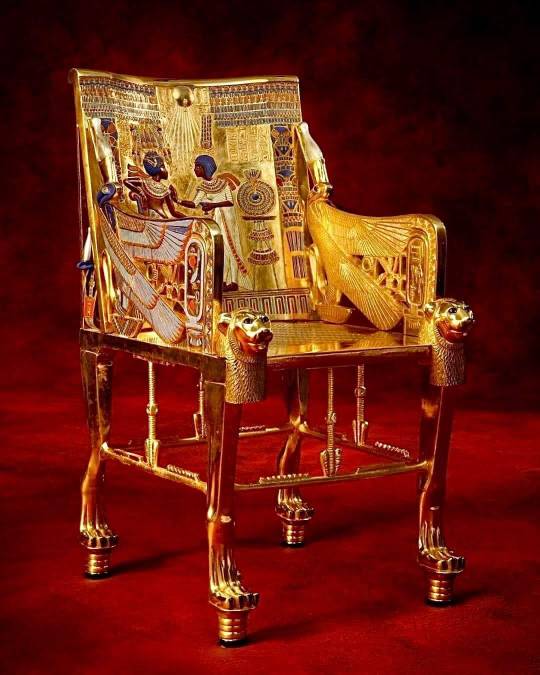
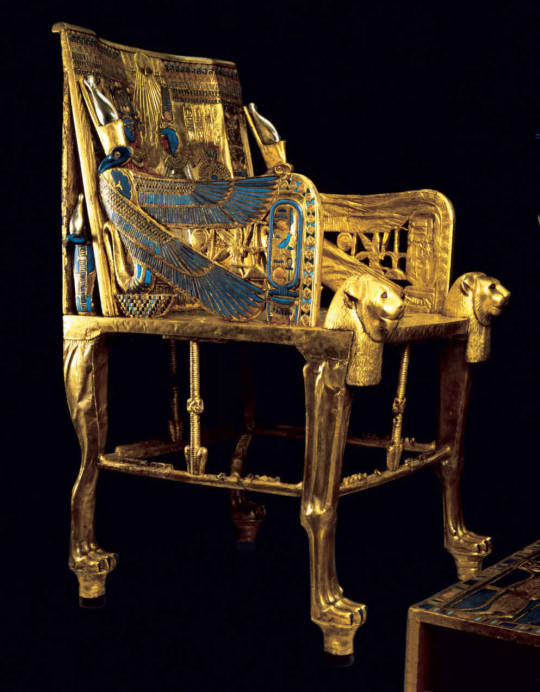

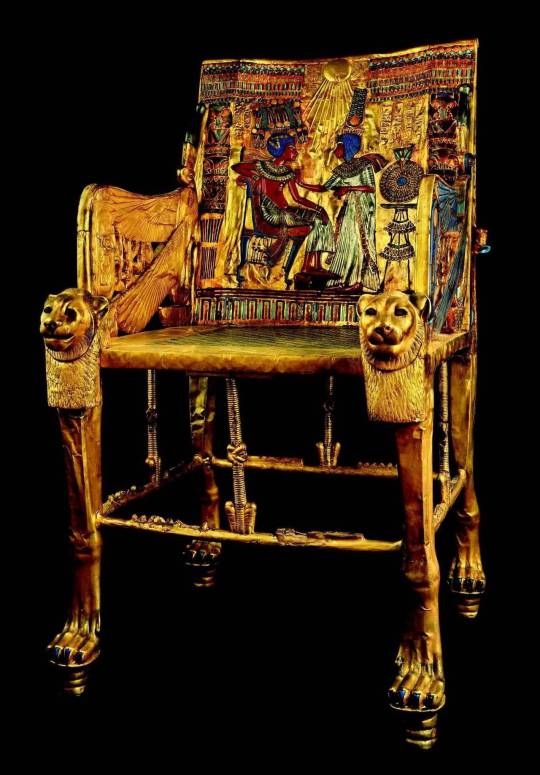

Golden Throne of Tutankhamun
New Kingdom, late 18th Dynasty, reign of Tutankhamun, ca. 1332-1323 BC.
The luxurious armchair is distinguished by the complexity of its technique and an abundance of details. Two projecting lions’ heads protect the seat of the throne while the arms take the form of winged uraei or rearing cobras wearing the double Pschent crown of Egypt and guarding the cartouche names of the king.
The golden throne of Tutankhamun was discovered in 1922 by the British archeologist Howard Carter. It was found beneath a hippopotamus funerary bed in the antechamber of the Tomb of Tutankhamun.
The throne is called (Ist) in Egyptian hieroglyphs after the name of the mother goddess Isis. who was usually depicted bearing a throne on her head as her characteristic emblem. It is made of wood and covered with gold and silver. It is ornamented with semi-precious stones and colored glass.
The throne meant, not only the link between the worlds of Gods and the people, but also majesty, stability, safety and balance. Since kings were considered Gods on earth, it may not be difficult to imagine Tutankhamun imposing his divine will over the rest of mortals while sitting on this golden throne.
Wood, gold leaf, silver, semi-precious stones, glass paste,
Height: 102 cm, Length: 54 cm, Width: 60 cm,
Egyptian Museum, Cairo.
#art#design#history#luxury lifestyle#style#furniture#throne#gold#tutankhamun#egypt#gold leaf#glass#wood#gods#egyptienmuseum#cairo#tomb#new kingdom#armchair
2K notes
·
View notes
Text
Back to the past| Dark! Tutankhamun x Modern! Reader
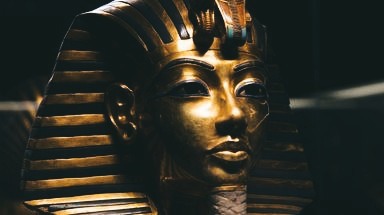
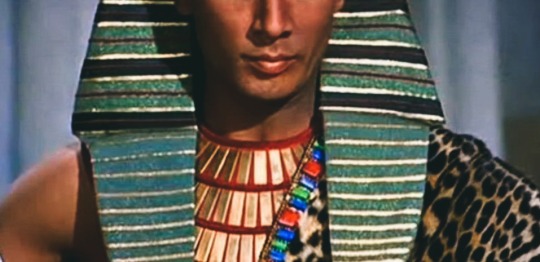

After discovering your fiance's cheating, you didn't expect to make a car accident and get transported to the past.
And not only that but meet Pharaoh Tutankhamun.
Who becomes fiercely protective of you, monitoring their every move to ensure their safety.
He might even go to extreme lengths to eliminate perceived threats.
He declares you in front of others as his wife and royal Possession Tutankhamun insists on having yoy close at all times, whether it's attending royal events together or keeping them within the palace walls.
As he Becomes more possessive as time goes on, Tutankhamun might isolate you from others, limiting your interactions to maintain control over your social circle.
Any attention you receive from none other than him, triggers Tutankhamun's jealousy, leading to intense reactions that range from subtle displeasure to more overt displays.
The young pharaoh gives you symbolic tokens of his love, like unique jewelry or clothing, to strength your connection to him.
Expensive gifts are the way to the woman's heart.
He even built a tomb for you beside his own.
"What do you think of your tomb, my love? I had everything made out of gold"
Like the delusional pharaoh really wants you to be with him in the after life.
He would pretend to be sick sometimes because he enjoys how you worry over him.
Even though you are aware of his tendencies, but you have to bear with it.
I mean what choice do you have?
It's either the streets or be the queen of one of the most famous Egyptian pharaohs.
#tw: toxic relationships#reader insert#Yandere pharaoh#tutankhamun#Tutankhamun x reader#History#egyptian history
1K notes
·
View notes
Text

Egyptian Scarab Bracelet, from Tomb of Tutankhamun (1341-1323 BC), and was made with Gold, Lapis-lazuli, Carnelian, Turquoise and other semi-precious stones.
The scarab has been deified during Ancient Egypt. Its shape was related to the god Jepri in the graphic representation (human body and scarab face). However, normally, people referred to the scarab as Ra, the creator of the universe, one of the most important gods in the Egyptian pantheon.
#scarab beetle#scarab#bracelet#gold bracelets#gold jewelry#ancient jewelry#antique jewelry#vintage jewelry#antiquities#Egyptian jewelry#ancient civilizations#ancient cultures#toya's tales#style#toyastales#toyas tales#fashion#winter#december#turquoise#semi precious stones#egyptology#egyptian#ancient egypt#egypt#tutankamón#tutankhamun#king tut#pharoah#lapis lazuli
264 notes
·
View notes
Text

Statue of Tutankhamun in Karnak Temple, Luxor, Egypt
#tutankhamun#egypt#ancient egypt#egyptian#archaeology#egyptology#anubis#egyptian gods#ancient#ancient world#ancient art#pharaon#karnak temple#luxor#travel#wanderlust#history#ancient history#original photographers#photographers on tumblr
328 notes
·
View notes
Text

Redrop thank you
#Offical art#redrop#fgo#arjuna#bhima#Parvati#douman#ritsuka fujimaru#gudako#mash kyrielight#enkidu#asterios#kintoki#musashi#Hokusai#tutankhamun#kojiro#tlaloc#tezcatlipoca#I'm not tagging you know who#JUNA AND BHIMA R SO CUTEEEEEE
213 notes
·
View notes
Text

mystery house crafters
imaginary scramble
186 notes
·
View notes
Text
BABE, wake up, First pharaoh's tomb found in Egypt since Tutankhamun's was uncovered over a century ago.
122 notes
·
View notes
Text

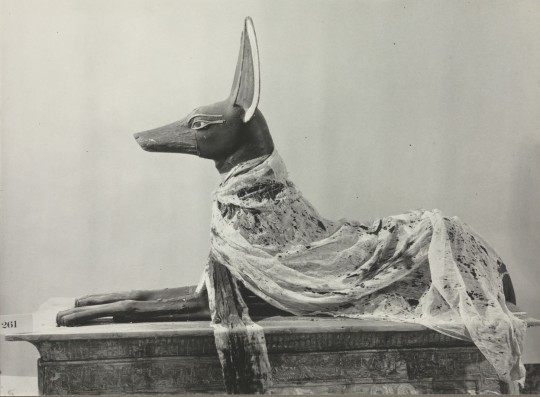
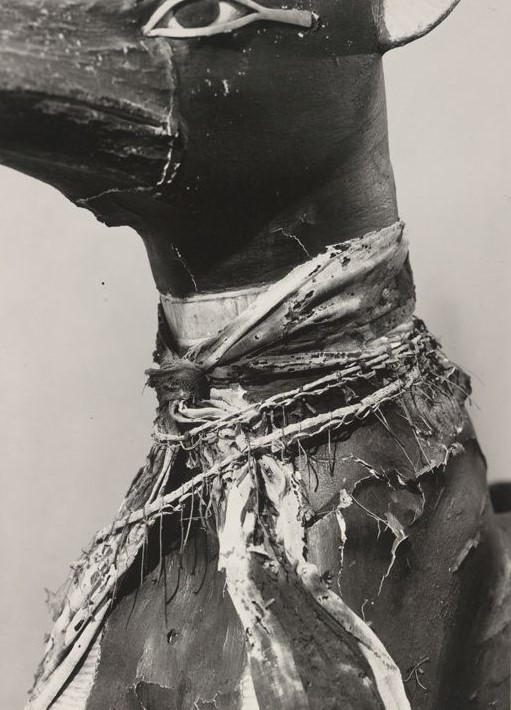
The Shrine of Anubis as discovered within Tutankhamun's tomb, with original linen wrappings and garlands still present. Photographed by Harry Burton, 1926.
4K notes
·
View notes
Text

Gold dagger of Tutankhamun
Tutankhamun’s mummy was provided with two daggers encased in gold sheaths, one with an iron blade and the other with a blade of hardened gold. It is the latter specimen ceremonial Egyptian dagger which is shown here.
The handle is exquisitely decorated with gold granulation and glass inlays and is fitted with a knob of rock crystal. The gold dagger length 31.8 cm; blade 20.4 cm, width 3.4 cm; sheath length 20.6 cm, width 4.3 cm.
New Kingdom, 18th Dynasty, ca. 1332-1323 BC.Tomb of Tutankhamun (KV62), Valley of the Kings, Thebes. Now in the Egyptian Museum, Cairo. JE 61584A-B
Read more
1K notes
·
View notes
Text

Dating back over 3,300 years, a pair of sandals belonging to the Egyptian Pharaoh Tutankhamun was found in his tomb. Tutankhamun reigned during the 18th Dynasty, approximately from 1336 to 1327 BC, and these extraordinary sandals are currently displayed at the Museum of Egyptian Antiquities in Cairo, Egypt.
#tutankhamun#tutankamón#king tut#ancient egypt#egyptology#egyptian#egypt#egyptian art#egyptian artifacts#artifact#ancient history#ancient civilizations#ancient#vintage style#vintage#vintage shoes#shoes#sandals#toya's tales#style#toyastales#toyas tales#art#art history#18th dynasty#pharoah#december#cairoegypt#cairo#antique
215 notes
·
View notes
Text

Based on The Opening of the Mouth Ceremony on the walls of the Burial Chamber of Tutankhamun
#ancient egypt#ancient history#history#ancient#new kingdom#18th dynasty#pharaoh#history art#tut#king tut#tutankhamun#tutankhamuns tomb
45 notes
·
View notes
Text

Archer-class Tutankhamun, the child pharaoh
82 notes
·
View notes
Text




Archer class Tutankhamun for the Mystery House Crafters event in Fate Grand Order.
Illustrator: YOCO_N
#fate go#fgo#fate grand order#fate series#game#servant#mobile game#fate#official art#typemoon#archer#archer class#archer servant#fate character#game character#tutankhamun#game event#lasengle#TYPEMOON#type moon#official illustrator#official artist#official illustration#YOCO_N#character art#illustrator#illustration
72 notes
·
View notes
